To what extent should contemporary society respond to the legacies of historical globalization? Part B
| Site: | MoodleHUB.ca 🍁 |
| Course: | PAVE Social 10-1 |
| Book: | To what extent should contemporary society respond to the legacies of historical globalization? Part B |
| Printed by: | Guest user |
| Date: | Sunday, 30 November 2025, 8:56 AM |
Description
To what extent should contemporary society respond to the legacies of historical globalization?
Table of contents
- Introduction
- Evidence of Injustice
- Consequences
- Benefits of Historical Globalization
- Conclusions about the Impacts
- Impacts
- Historical Globalization, Identity, and Citizenship
- Reimagining a Past Without Imperialism
- Contemporary responses
- Lingering Consequences- Papaschase Land Claim
- Which global issues have origins in imperialist policies and practices?
- Awareness Campaign
- Moral and Legal Responsibilities
- Kanesatake Actions
- What are the responses of Indigenous peoples to addressing lingering consequences?
- Effective Responses
- Responses of Governments
- What are the governmental responses to addressing the lingering consequences?
- Responses of Non-Governmental Organizations
- Assessing the Effectiveness of Responses
- Assuming Responsibility for Past Injustices
- Position Paper #1 - Globalization and Imperialism
- Unit 3 Quiz
- Midterm Review
Introduction
Please use this schedule to help guide your progress through Unit 3.
 |
Empires, rapid industrialization, powerful economies, and wealth were all motives for the European expansion into the Americas. Originally, the imperialist goals were to spread Christianity, search for gold, and claim glory on behalf of the empire. By the nineteenth century, in a time period now referred to by many historians as the Age of Imperialism, many European countries expanded their territorial control and exploitation of human and natural resources in a scope more global than in the fifteenth century. “The sun never sets on the British Empire.” This is a quote describing the economic and political power of Britain in the nineteenth century and well into the next. Britain was able to establish a global network of colonies and trade built on imperialism, capitalism, and colonialism not rivaled until the years just before the outbreak of World War I. Imperialist practices were actively encouraged as empire building, and many patriotic songs and poems spoke proudly about the rise of the British Empire. This is just one perspective on the impacts of historical globalization on a group of people. In Haudenosaunee world view and that of many First Nations, the acts and decisions made have implications seven generations later. In the perspectives of many Aboriginal peoples now, the current conditions in which they live are the legacies of imperialist acts and decisions made over two hundred years ago. |
| In this module, you will examine the imperialistic policies and practices encouraged by historical globalization. You will consider the multiple perspectives on the legacies of global contact, trade, and cultural interaction on ways of life, identity, and citizenship. With awareness of the legacies of historical globalization, many individuals and groups begin to wrestle with the question of whose moral and ethical responsibilities it is to respond to the resulting disadvantages and injustices. You will have an opportunity to examine the legacies, issues, positions, and responses in relationship to historical globalization. Your work in the lessons, the section inquiries, the two section challenges, and the challenge to take action will support how you will respond to the issue question: To what extent should contemporary society respond to the legacies of historical globalization? |  |
Evidence of Injustice
What are the continued impacts of historical globalization on Indigenous peoples?
What evidence of injustices can you identify?
First contacts between Indigenous and non-Indigenous peoples brought about trade relationships and cultural interaction. The immediate impacts of these meetings were the technological and cultural exchanges between both groups. Many of these exchanges were co-operative and mutually beneficial, as witnessed by the fur trade relationships between the French and First Nations in New France. In others they resulted in turmoil, such as the Spanish encounter with the Aztecs that resulted in conflict and disease.
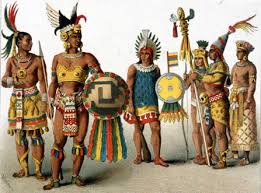
By the nineteenth century, the benefits of globalization began to weigh more in favour of Europeans than Aboriginal peoples. Many individuals believe Indigenous or Aboriginal peoples are the most challenged by the impacts of globalization to their ways of life, identity, and citizenship.
In this section, you will examine and assess how historical globalization continues to impact Indigenous peoples. Throughout the module you will see references to Aboriginal peoples in a North American context and Indigenous peoples in a global context.
Injustice can be unfair treatment, a violation of rights, or a hurt or wrong against individuals or groups. Globally, there were many historical incidents when the imperialistic practice of the domination of one group over another resulted in injustice. The rule by the Roman Empire, the expansion of the Mongol Empire, and the conflicts between Christians and Muslims during the Crusades are some examples.
Acts of injustice may not always be deliberate on the part of one group, but the resulting treatment or violation can have deep impacts for the receiving group. In the 1950s the Canadian government carried out a program to educate Inuit children in Canada to facilitate their transition into Canadian society. At the time it was generally accepted by the government and many non-Aboriginal Canadians that assimilation was the best solution to the transition.
Multimedia
Go to the CBC Archives website and search for the topic “An Inuit Education: Honouring a Past, Creating a Future.” View the video clip To educate or not to educate? (January 20, 1957). Analyze the assimilation strategy for Inuit children and identify evidence of injustices to complete your chart.
You may also be interested in watching Finding a balance on Baffin Island (November 24, 1987).
Reflection
In the circumstances you explored, how can the implementation of an education system result in injustice?
Assignment
Complete the Evidence of Injustices Assignment at this point.
Consequences
What are the consequences of historical globalization on the lands, rights, and quality of life of Indigenous and non-Indigenous peoples?
European imperialism established European control over the Aboriginal peoples and territories in North America. The consequences of establishing global networks of trade can impact existing ways of life.
Think about how much of your identity is based on your geography, your cultural background, and your citizenship. For many Indigenous peoples, historical decisions about borders and citizenship had deep effects on their identities. Individuals were separated from groups that had long been connected by shared connections to the land and culture. The artificial borders often forced Indigenous peoples to declare an identity to the country or nation defined by the borders. Declarations of their identity as a member of a First Nation, an Inuk, or a Métis was often not accepted as legitimate by government officials.
As a North American example, the borders that distinguished the United States and Canada were negotiated and legally entrenched in government treaties and on maps in the nineteenth century. Often these arbitrary lines were drawn without consultation or regard for the cultural groups who had inhabited the territories long before the arrival of the Europeans to North America.
Compare the two maps. Examine how the Aboriginal cultural groups are divided by the 49th parallel.
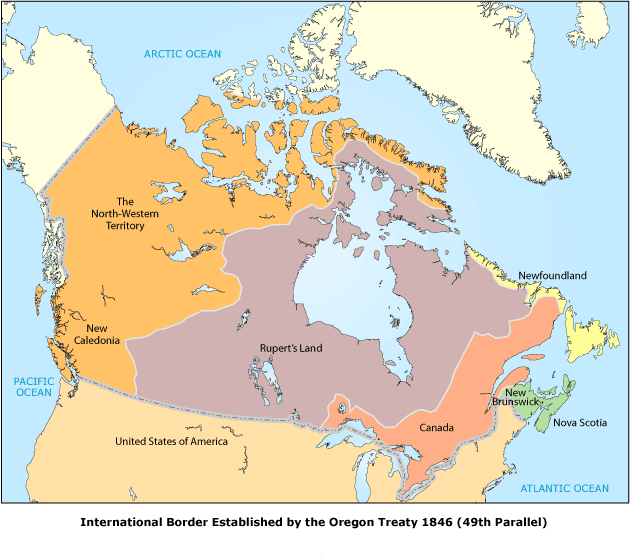
Reflection
Discuss how borders define who you are and how you identify yourself. Imagine the borders of your neighbourhood were redrawn and you were no longer part of the province, city, or town you currently live in. Would you be willing to accept a new identity if a new border created change in your identity?
Benefits of Historical Globalization
In what ways has historical globalization benefited people?
Many opponents of globalization will disagree that historical globalization has any benefits. To get a balanced view on globalization, explore what benefits may have resulted in the historical pursuit of globalization in Canada.
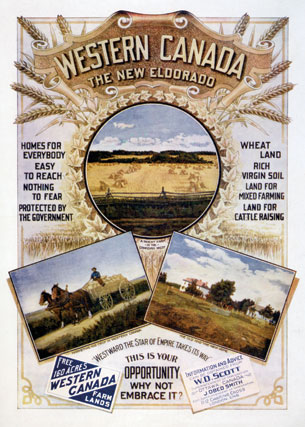
Aboriginal Peoples and the Crown
The colonialism of the British Empire opened up the West for settlement. Our geographic understanding of Canada is based on the territory defined within our borders. The territory of Canada was created by the treaty negotiations with First Nations before and after Confederation and the immigration campaigns that invited newcomers to settle the West. This land we define as Canada has origins in historical globalization.
In many cases, the initial contact between Europeans and Aboriginal peoples in New France and the British North American colonies began with a spirit of co-operation between the two groups. The relationship between Aboriginal peoples in Canada and the Crown is one such example. Although the Crown, as the British governing body was often referred to, viewed the territory as British colonial territory, it was willing to continue Aboriginal usage of the land. Treaties captured the importance of negotiating land from Aboriginal peoples and prevented colonists from purchasing Aboriginal lands. After Confederation, in the spirit of the Crown, the early Canadian governments continued to negotiate treaties and land with the Aboriginal peoples. Many historians believe this relationship avoided the attempts to violently eradicate the entire population of Aboriginal peoples, as the American policies to the south had almost achieved.
Assess the impacts of historical globalization. Gather information from the assigned readings in this Explore to form your own conclusion about which impacts of historical globalization were generally positive and which continue to pose lingering issues. Complete your chart.
Reflection
Not for marks but a must-do!
Conclusions about the Impacts
Continue to explore the impacts of historical pursuit of globalization in Canada that may pose challenges.
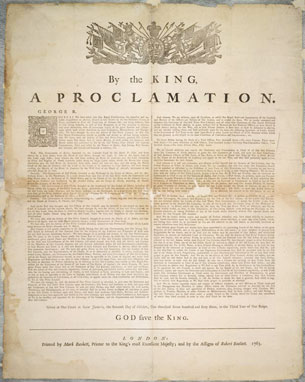
Read
Read “Two Perspectives About Imperialism” on page 155 in Perspectives on Globalization. Record additional information in your Notebook.
Read “European Imperialist Policies and Practices” on pages 162 to 171 in Perspectives on Globalization. Add information to your Notebook. Include notes on the comparison between what happened in North America and what happened in India under British rule.
Read the information found on this LINK.
Read the information found on this LINK.
Multimedia
Reflect
You examined many examples of how imperialism negatively impacted the lives of Aboriginal peoples. Review your notes. Identify the main idea that pushed the lives of Aboriginal peoples toward more negative consequences. In your view, what was the key change in the relationship between Aboriginal peoples and the Crown in North America?
Assignment
Please complete the Conclusions About the Impacts Assignment now.
Self-Check Quiz (10 Multiple Choice questions)
Impacts
What were the impacts of historical globalization on the identity and citizenship of the Indigenous and non-Indigenous peoples?
The Haudenosaunee world view teaches that the actions and decisions of the past have consequences for generations of the future. Careful consideration was encouraged when Elders and chiefs were faced with making decisions. European world views tended to base decisions on immediate results or in response to possible issues in the immediate future. Little consideration was given to how actions would affect the people seven generations later.
Read
Samuel de Champlain encouraged the intermarriage between French men and First Nations women. Read the following "Champlain: The Marriage of Two Cultures" below;
Click HERE to read.
Reflection
In what ways has the intermarriage of two cultures shaped issues of identity generations later?
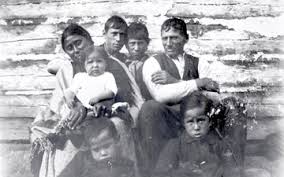
Continue your examination of the legacies of historical globalization by looking at the relationship between historical globalization and identity and citizenship in Canada.
Backgrounder to Early Canadian Identity and Citizenship
Colonial recruitment of settlers to Canada intentionally selected people from Europe and the United States who were of non-Aboriginal background. The early franchisement of Canadians was restricted to land-owning men of European background. Imperialist policies and practices favoured bestowing citizenship on this group. The domination of the British through imperialist policies led to a position of power for this group.
Understandings of Canadian identity and citizenship in the following generations continued to benefit those of European heritage. Women and men of non-European heritage mainly carried out the battles for the franchise and rights in Canada. Recognition of a place in Canadian society is no longer a key issue for many Canadians whose ancestors gained identity and citizenship in the early history of Canada.
Timeline of the Vote in Canada
1848 – Nova Scotia is the first to elect a responsible government. The voters are men of European background who hold property and pay taxes.
1850s – Slaves freed from the United States are granted freedoms, such as the vote and the right to run for office.
1867 – The British North America Act continues the tradition of providing the right to vote to the same group. Women and Aboriginal groups continue to be excluded. Men from Asia are also part of this exclusion.
1918 – Women whose husbands, fathers, or brothers who served or are serving overseas in the Great War are granted the right to vote. This franchise is only granted to women who are Canadian citizens. Aboriginal and Asian women are excluded. Aboriginal men can only gain the franchise if they give up their Indian status.
1920 – To be able to vote, a Canadian has to be a British citizen at least 21 years old.
1947 to 1948 – Chinese, Indo, and Japanese Canadians gain the right to vote.
1960 – Universal franchise (right to vote) is granted to Aboriginal peoples in Canada without having to give up Indian status.
Reflection
Discuss how identity and citizenship of non-Aboriginal peoples in Canada were granted. Use information from the backgrounder to support your discussion.
Historical Globalization, Identity, and Citizenship
How has historical globalization impacted the identity and citizenship of Indigenous peoples?
Aboriginal identities and forms of citizenship existed before the arrival of the Europeans. You will examine the impacts of historical globalization on these identities and citizenship.
Reflection
You should now complete What Happens If . . . ?
Now Create a statement that describes the transition in Aboriginal identity and citizenship. How has historical globalization impacted the identity and citizenship of Indigenous peoples?
Historical globalization is often a factor in explaining the erosion of Indigenous identities and citizenship. Policies of assimilation did little to place Aboriginal peoples on the same status as non-Aboriginal peoples. Instead, the actions of the Crown and the Canadian governments of the past often marginalized Aboriginal peoples.
View the following cartoon and reflect.
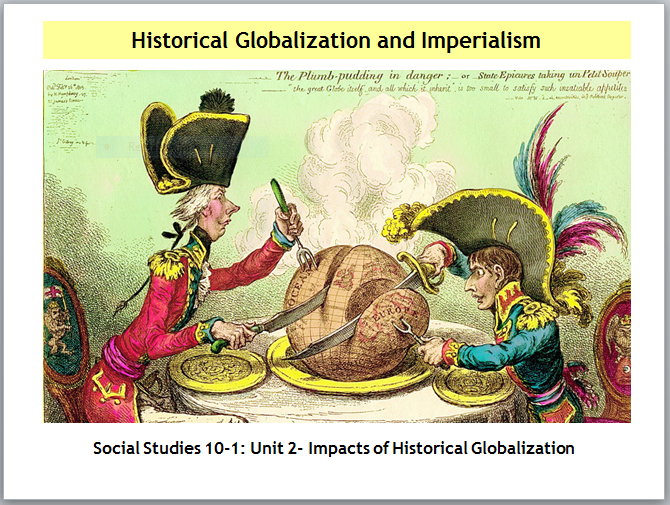
Reimagining a Past Without Imperialism
Without imperialism, what legacies would we pass on to the Seventh Generation?
You will examine the impacts of historical globalization and imperialism and then write an alternative or counterfactual scenario. How different might present conditions for Aboriginal peoples be if a specified imperialist practice in Canada had not occurred? Would conditions have improved, worsened, or stayed the same?
Assignment
You should now complete the Reimagining a Past Without Imperialism Assignment .
Summary
Historical globalization fostered the rise of wealthy and powerful European empires. In Canada, historical globalization created Canada as a colony and then as a country. The imperialist policies of the British Empire in Canada led to the balance of power mostly in favour of non-Indigenous peoples. Those of European descent were able to gain rights and status as citizens. For First Nations, Métis, and Inuit peoples in Canada, the application of imperialist practices created challenges to their ways of life, identity, and citizenship that have lingered for more than seven generations. In response, efforts have been made by both Aboriginal and non-Aboriginal peoples in Canada to respond to the legacies of historical globalization.
Contemporary responses
What are the contemporary responses to historical legacies of globalization?
For many people, it is much easier to identify the origins of injustices and impacts of historical globalization than to work to end their lingering effects. Through media and global campaigns, many Indigenous peoples who face everyday life challenged by the ongoing legacies of imperialist practices are demanding actions to create change. Change can be proposed by Indigenous individuals or groups, governments, or diverse individuals who share common concerns about how the actions and decisions of the past have created global issues in the lives of Indigenous peoples now.
In this section, you will examine the lingering legacies that continue to have an impact on the everyday lives of Aboriginal peoples in Canada. You will explore whether we as a contemporary society have the moral and ethical responsibilities to resolve the injustices of historical globalization. You will also assess the attempts to address those legacies. These inquiries will prepare your response to the following question: To what extent should contemporary society respond to the legacies of historical globalization?
How quickly does news spread in your school or community? The analogy that news spreads like wildfire existed long before cellphones and the Internet, but twenty-first-century communication has incredibly sped up how quickly people are informed. There are many activists, such as those who created the DigiActive website, who take advantage of twenty-first-century technology to speed up responses to global events.
“Tools like the Internet and mobile phones let us communicate with other people who share our concerns, to disseminate a message of change, to organize and inform ourselves, to lobby the government, to take part in activism.”
Mission statement from DigiActive
www.DigiActive.org

Reflection
Please complete the Global Events Reflection assignment now.
Lingering Consequences- Papaschase Land Claim
What are the lingering consequences?

|
Lingering consequences are results that continue to impact people generations later. The past decisions and actions involving Indigenous peoples continue to create issues of identity, citizenship, and quality of life. In North America, Aboriginal peoples continue to face the lingering consequences of the resulting relationships and roles the British Crown and later Canadian governments created. It is not just Aboriginal peoples in Canada who must resolve these lingering consequences, but also non-Aboriginal peoples. Many believe these are impacts that affect all people in Canadian society and must be resolved in order for Canada to truly be an inclusive and fair society. In 2008 the Papaschase First Nation in South Edmonton took their experience of lingering consequences to the Supreme Court of Canada in search of a resolution. For many Edmontonians who owned homes and businesses in South Edmonton, this Supreme Court claim also had the potential of becoming a consequence on their own lives. |
Read “Who Owns This Land?” Gather perspectives about how the decisions and actions in the 1880s now impact the Papaschase First Nation and Edmontonians in South Edmonton.
Assignment

Further information
Which global issues have origins in imperialist policies and practices?
The Papaschase land claim is one example of how the loss of land and the dispersal of band members by 1930 have lingering consequences on the identity and citizenship of Papaschase members today.
Read
Read “Civil Strife in the Democratic Republic of Congo” on pages 193 and 194 in Perspectives on Globalization.
-What is the civil conflict in the Democratic Republic of Congo?
Read “Learning from Past Mistakes” on pages 196 to 200 in Perspectives on Globalization.
-What issues are impacting the people of the Chiapas region of Mexico?
Internet Research
Research the issues that emerged with the partition of India. Watch a historical video about the conflict in Kashmir after the withdrawal of British rule in India – War in Kashmir (1965).
Research the issues that emerged from British colonialism in Kenya. Watch the video Kenya’s Problems 1954–1986.
Research the crisis in Darfur, Sudan. Read the New York Times article “Darfur’s Agony,” April 14, 2008 (click to open).
What is imperialism? Check out this video.
Awareness Campaign
Which legacies continue to influence contemporary globalization?
|
conflict diamond or blood diamond: a diamond sold to finance terrorism or conflicts such as civil
|
Have you heard of conflict diamonds or blood diamonds? Most people in the Western world appreciate the monetary value and the cultural significance of a diamond. Recent commercials instill the diamond with values of hope, love, commitment, and self-reward. The demand for diamonds over more precious gemstones dates back to the Victorian era when diamonds became a symbol of a promise to marry. This industry continues to be strong, with $5.9 billion in 2007 diamond sales as reported by the global diamond company de Beers. |
Internet Research
Research the issues related to the diamond market in the Western world and the diamond industry in Sierra Leone. The History Channel website offers a series of streaming video about blood diamonds.
Assignment
Please complete the Awareness Campaign Assignment. Or get it a Google Doc here.
Consumer Awareness
In what ways does consumer awareness of the supply and demand of goods impact the contemporary globalization of goods?
Extension Assignment

Watch the movie Blood Diamond to explore the topic further.
Moral and Legal Responsibilities
What are the moral and legal responsibilities?
Often you will become aware of issues related to the legacies of historical globalization from one perspective—that of the individual or group that has endured the consequences over the generations. Active global citizenship for individuals and groups means to respond to injustices. This leads to the debate over whose responsibility it is to redress the issues of the past. Are people morally responsible? Is there a legal responsibility held by citizens and countries to right the mistakes of the past?
Compensation and acknowledgements of injustices that took place during the internment of Japanese people in Canada, the Head Tax, and discriminatory immigration laws placed on Chinese people are examples of the Canadian federal government taking responsibility for past actions. Other groups have now taken steps to have current governments correct the legacies imposed on them. This has raised the debate over the extent that contemporary societies should pay for the actions of past governments and the form that restitution and redress should take.
|
In a 2006 Environics poll, a growing number of Canadians expressed that change is desired to address Aboriginal issues. A March 2006 Environics poll indicates that 62% of Canadians want to see the poor social conditions of First Nations improve (a 12-point jump from 2003) and also indicates that 52% of Canadians do not blame First Nations for these conditions but instead identify federal government policies and Canadians’ attitudes as the main problems (an eight-point jump since 1997).
|
|
Terms to know redress: to set right or make up for a wrongful act morally: according to a set of principles on what is believed to be the right thing to do legally: according to what is permitted by a set of laws restitution: an action to correct a wrongful act reconciliation: an act that will correct an injustice in hopes of restoring peace and stability |
Reflect:
Who Is Responsible?
Where do the majority of your friends/family position themselves on the question of who is responsible? Assess the type of response a moral responsibility would demand in comparison to a legal responsibility. In your view, what would a moral and a legal response look like?
Not for marks but very important to ponder!
Kanesatake Actions
How are Indigenous peoples responding?
Recent events in Canada and globally demonstrate that individuals and groups have responded to the issue about taking responsibility. From a global citizen perspective, there are many who believe the responsibility to respond to local or national issues is not just in the hands of local citizens. Many Canadians have rallied with others globally to donate money for cyclone survivors in Myanmar and to politically pressure the Myanmar government to open up its country to international aid. Protesters against the 2008 Beijing Olympics have shown their support alongside Tibetans who have spoken out for Tibet independence.
The legacies and injustices of historical globalization are also issues that Canadians and others feel a responsibility to respond to globally.
In Canada, many Aboriginal groups are not satisfied with the contemporary situation that the legacies of historical globalization have created. They have taken action to change the role in which they are dependent on the decisions of the Canadian government to correct the social, cultural, economic, and political consequences of historical globalization.
Many Canadians often view the conflict between the Kanesatake First Nation and local officials and residents of the town of Oka, Québec, as an example of Aboriginal activism. For many outside Oka, the perception was that it was a conflict over land and a proposed golf course. In the perspective of the Kanesatake First Nation, it was more than standing in the way of the development of a golf course. It was a response to past injustices created by imperialism.
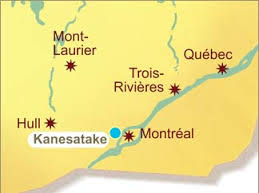
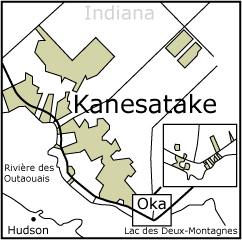
Multimedia
The CBC Archives has a collection of videos available online. Go here to watch an overview of what happened during the Oka Crisis: http://www.cbc.ca/archives/entry/10-year-anniversary-of-oka.
https://www.cbc.ca/news/world/this-is-not-our-land-1.3881163
Internet Research
The conflict in Oka did not just erupt suddenly in 1989. Go to the Kanesatake website and gather Kanesatake perspectives in “Our Lands” on the relationship to the land in conflict.
Read and Watch
1) Read about the Oka crisis on pages 190 to 192 in Perspectives on Globalization.
2) Take a look at some background information on the Oka Crisis here → Canadian Encylopedia: Oka Crisis.
3) Take a look at this video:
Assignment
Please complete the Kanesatake Actions Assignment now. Access a Google Doc of this assignment here.
What are the responses of Indigenous peoples to addressing lingering consequences?
Examine three responses of Aboriginal peoples in Canada and Indigenous peoples around the world to the legacies of historical globalization.
Read
Read “Addressing Effects of Imperialist Policies” on pages 171 to 174 in Perspectives on Globalization.
Read “Indigenous Self-Government” on pages 176 and 177 in Perspectives on Globalization.
Internet
Click here and research the story behind the creation of the Assembly of First Nations in Canada.
Reflect
Complete this assignment or this Google Doc here. Not for marks but important!
Effective Responses
How effective are these responses?
Debate continues about the end results of the conflict in Oka. As you examine the different responses of Indigenous peoples, reflect on the effectiveness of these responses in relationship to Indigenous quality of life, identities, and citizenship.
Reflect:
What occurred in Oka was one of many responses by Aboriginal peoples in Canada. Much like the Northwest Resistance led by Louis Riel, Aboriginal responses can be associated primarily with violence and conflict. Not all Aboriginal and Indigenous responses are violent. Which non-violent response would you consider effective in addressing the legacies of historical globalization?
Are People and Governments Responding?
The actions of Indigenous peoples around the world demonstrate that efforts within the groups themselves are being taken to respond to the legacies of historical globalization. These responses are diverse and aim to address the lingering impacts of imperialism over Indigenous quality of life, identity, and citizenship.
Responses of Governments
How are governments responding?
Have current governments acknowledged the need to respond to Indigenous issues resulting from historical globalization? Examine the programs and responses of governments.
Governmental responses may address Aboriginal issues in education, health, and employment.
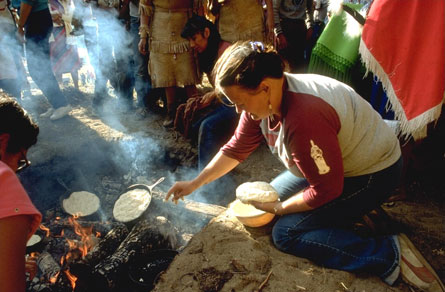
In Alberta the provincial government has supported many responses. The current Alberta social studies program includes Aboriginal perspectives in the issues and history of the province and country. Educational programs at many levels are established to respond to the diverse cultural and linguistic concerns of First Nations groups in Alberta. Amiskwaciy Academy in Edmonton is a school that integrates Aboriginal culture, language, and traditions. Aboriginal languages such as Blackfoot and Cree are accredited senior high language courses. In addition to Aboriginal perspectives in social studies, Aboriginal studies courses are options available in secondary schools.
Aboriginal issues in health are rooted in the past policies of assimilation. Past governments and non-Aboriginal peoples often dismissed traditional foods, medicines, and ways of healing. Health Canada has responded to the impacts of imposing Western perspectives on food and health by issuing Eating Well with Canada's Food Guide – First Nations, Inuit and Métis. The guide supports healthy eating within Aboriginal ways of life.
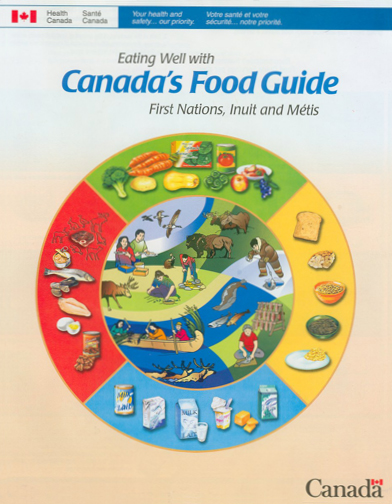
Canada's Food Guide
In what ways does the creation of a food guide for Aboriginal peoples represent an attempt to respond to past legacies of imperialism?
What are the governmental responses to addressing the lingering consequences?
Adapting programs and publications to Aboriginal needs is one type of governmental response. There are also expectations for more fundamental and lasting responses to issues that continue to linger after past imperialist practices and historical globalization. Indigenous groups have called for restitution, redress, and reconciliation from diverse levels of government. Examine the responses of governments in Aboriginal issues.
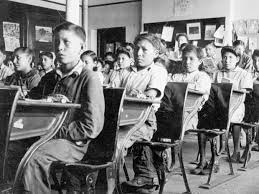
Read
Read about the residential school experiences and effects in “Contemporary Social Issues and Historical Imperialism” on pages 181 to 186 in Perspectives on Globalization. Examine the federal government’s response to the abuses associated with residential schools.
Responding to Residential Schools: Search for Healing
On May 10, 2006, the Government of Canada approved the Indian Residential Schools Settlement Agreement. This agreement included the following provisions:
-
A payment to every eligible former student living on May 30, 2005, and who resided at a recognized Indian Residential School: $10,000 for each former student plus an additional $3,000 for each year of residence past the first year
-
Payments not affecting social assistance payments and not subject to income tax
-
A Truth and Reconciliation Commission, mandated to promote public education and awareness about the Indian Residential School system and its legacy as well as to provide former students, their families, and communities opportunities to share their Indian Residential School experiences
-
Additional funding for events and memorials to commemorate the legacy of Indian Residential Schools
-
An additional endowment to the Aboriginal Healing Foundation to support its healing programs and initiatives for an additional five years
-
In total, $1.9 Billion for the direct benefit of former Indian Residential School students
| Our vision is one where those affected by the legacy of Physical Abuse and Sexual Abuse experienced in Residential School have addressed the effects of unresolved trauma in meaningful terms, have broken the cycle of abuse, and have enhanced their capacity as individuals, families, communities, and nations to sustain their well-being and that of future generations. Our mission is to encourage and support Aboriginal people in building and reinforcing sustainable healing processes that address the legacy of Physical Abuse and Sexual Abuse in the Residential School system, including inter-generational impacts. We see our role as facilitators in the healing process by helping Aboriginal people help themselves, by providing resources for healing initiatives, by promoting awareness of healing issues and needs, and by nurturing a supportive public environment. We also work to engage Canadians in this healing process by encouraging them to walk with us on the path of reconciliation. Aboriginal Healing Foundation |
Truth and Reconciliation CommissionIn order to begin the healing process The Indian Residential Schools Truth and Reconciliation Commission was established with a mandate of 5 years to act as an independent group to give former students of residential schools the ability to share their experiences.The Canadian commission was a little different than other commissions in other parts of the world because it was mainly concerned with experiences of children. Over a period of 100 years the commission focused on the legacies created by the imposition of the residential schools on First Nations people. The Truth and Reconciliation Commission of Canada wanted to create an atmosphere of reconciliation between Canada's Aboriginal and non-Aboriginal people to allow the country to move foward with strong partnership between its peoples. The process of the Commission used the United Nations Declaration on the Rights of Indigenous Peoples as its framework to guide reconciliation. In 2010, Canada announced that it accepted the United Nations Declaration on the Rights of Indigenous Peoples without qualification. As a result, the rights of First Nations, Inuit and Métis people to self-determination and constitutional rights must be recognized. To this end, healing began with apology and public truth sharing that would lead to acknowledgement of the harm that was done by the Residential Schools Program and move toward redressing those harms. This was conducted as a constructive process that would address the legacies of colonialism that were so destructive for Aboriginal peoples' cultures. During the 5 years of its mandate, the Truth and Reconciliation Commission gathered hundreds of first hand testimony from former students in Indian Residential Schools. These stories were recorded and made available for all Canadians as part of the Reconciliation process for Canada. You can access the full report by clicking on the following link. http://www.trc.ca/websites/trcinstitution/index.php?p=3
Video go here:
|
Reflect
How effective are these responses?
How successful are government responses to Aboriginal or Indigenous issues? Examine whether the quality of life, identities, or citizenship of Aboriginal peoples has improved with government support.
Since the days of the Crown acting on behalf of Aboriginal peoples in Canada, there has been some type of government action on the lives of First Nations, Métis, and Inuit peoples. Current governments have delegated resources to redressing the impacts of imperialism. The impacts of these responses on changing the lingering consequences of historical globalization are varied.
Responses of Non-Governmental Organizations
How are NGOs responding?
|
Responses to past injustices do not come only from the political activism of an Indigenous group or governments. Individuals and non-governmental organizations, locally and around the world, have taken action to enact change to some of the legacies that historical globalization and imperialism have placed on Indigenous peoples. The responses may be local in nature, but they are examples of citizens acting to find solutions. non-governmental organization (NGO): an organization that is created by private groups or individuals who do not have representation or participation in any government
In Alberta Daniel McKennitt created a response that attempts to resolve an Aboriginal health issue and deal with the decades of assimilation and marginalization that have created barriers to resolving the issue. According to the National Aboriginal Health Organization, in 2005 approximately 60% of the First Nations population in Canada reported being smokers. Of primary concern is the growing trend of smokers in Aboriginal youth. Many of the current stop-smoking programs are Western in perspectives and approaches. Tobacco has a different significance in Aboriginal societies. There is a ceremonial use and a personal use for tobacco. Daniel McKennitt presented an approach that aligned with Aboriginal understandings and traditions for a more effective health strategy to reduce smoking among Aboriginal youth. |
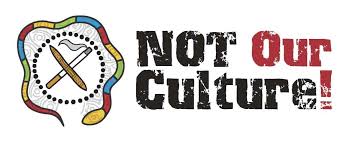 |
Read
Click here to read more.
Reflection
Perspectives on the Social Issues of Aboriginal Peoples
Reflect on the perspective of how non-Aboriginal peoples have previously approached the social issues of Aboriginal peoples. In what ways is this perspective a legacy of imperialism?
Assessing the Effectiveness of Responses
What are the non-governmental responses to addressing the lingering consequences?
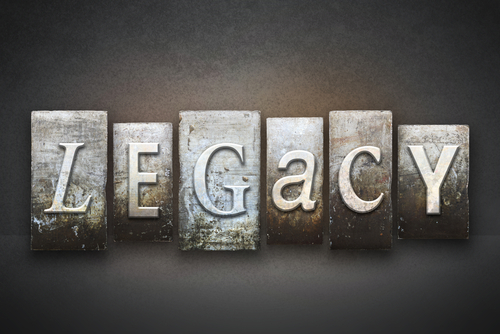
Examine what individuals and groups have done to respond to the legacies of historical globalization on Indigenous peoples.
Internet
Research the Internet about the work of the United Nations Permanent Forum on Indigenous Issues. What does the United Nations propose as responses to the injustices and legacies of historical globalization?
Research the Internet about the work of Rights & Democracy (International Centre for Human Rights and Democratic Development), a non-governmental Canadian organization that raises awareness of human rights and the promotion of democracy. Examine the role that Rights & Democracy has undertaken in the area of the rights of Indigenous peoples.
Go to the Rights & Democracy website. Click on the “What We Do” tab to find a link to “Indigenous Peoples’ Rights.”
Reflect
How effective are these responses?
Has the response of non-governmental organizations improved the lives of Indigenous peoples?
Assignment
Please complete the Assessing the Effectiveness of Responses Assignment now. Or use this Google Doc here.
Lesson Summary
Non-governmental organizations, such as the United Nations, have declared a necessity to respond to the legacies that limit the culture, language, rights, and identity of Indigenous peoples. They are the voices of Indigenous peoples in places where governments are not able to or willing to respond to the legacies of historical globalization.
Assuming Responsibility for Past Injustices
Many Indigenous global issues have origins in historical globalization. The ways of life, identities, and citizenship of Indigenous peoples continue to be challenged by the legacies of past imperialist practices and the pursuit of globalization. Individuals, groups, and governments now recognize that to create a society that includes Indigenous peoples as valued members of society with recognized rights and identities, it is necessary to address these legacies now.
There are varying degrees in the responses and the successes of these responses. Your challenge to take action should now reflect your response to the following question: To what extent should contemporary society respond to the legacies of historical globalization?
Glossary
conflict diamond or blood diamond: a diamond sold to finance terrorism or conflicts such as civil war
legally: according to what is permitted by a set of laws
lingering consequence or legacy: a result that continues to impact people generations later
morally: according to a set of principles on what is believed to be the right thing to do
non-governmental organization: an organization that is created by private groups or individuals who do not have representation or participation in any government
reconciliation: an act that will correct an injustice in hopes of restoring peace and stability
redress: to set right or make up for
restitution: an action to correct a wrongful act
Assignment
At this point, you should complete the Challenge: Assuming Responsibility for Past Injustices Assignment. or Google Doc here.
Position Paper #1 - Globalization and Imperialism
First watch this video.
Position Paper #1
You are now ready to complete your first essay. First you will need to complete the Google Doc here.
Once you have completed the draft assignment please hand-in for marks. Once you receive my comments and suggestions back, please complete your good copy of your first position paper.
Submit your final copy of your first position paper here: Essay #1 Final: To what extent did historical globalization effect peoples lives? or submit a Google Doc.
Please go through the How To Write a Position Paper Presentation before you write your position paper. This presentation will go through what to do and what not to do in your paper.
Confused? E-mail your questions! Or call!
You will be marked on the following RUBRIC:
|
|
|
Analysis of Source
|
|
Argumentation
|
|
Evidence
|
|
Effective Communication
|
|
-critically analyzes the source -demonstrates an understanding of the source and its relationship to an ideology |
|
-establishes a position -develops arguments based on logic and reason -establishes a relationship between position taken, argumentation, and the sources perspective |
|
-is relevant and accurate -reflects depth and/or breadth of social studies knowledge -evidence may be theoretical, historical, contemporary, and/or current events. |
|
-fluency and essay organization -syntax, mechanics, and grammar -use of SS10-1vocabulary and social studies terminology |
||
|
Excellent E |
6
5.5 |
The understanding of the source is insightful and sophisticated. A perceptive discussion of the source and its relationship(s) to the perspective(s) is/are comprehensively developed. |
8
7.5
7 |
Convincingly established position with judiciously chosen, consistent and compelling argumentation. The relationship between (see above) is perceptively developed and demonstrates insightful understanding of the assignment. . |
8
7.5
7 |
Evidence is sophisticated and deliberately chosen. The relative absence of error is impressive. A thorough and comprehensive discussion of evidence reveals an insightful understanding of social and application to the assignment. |
8
7.5
7 |
The writing is fluent, skillfully structured, and judiciously organized. Control of syntax, mechanics, and grammar is sophisticated. Vocabulary is precise and deliberately chosen. The relative absence of error is impressive. |
|
Proficient Pf |
5
4.5 |
The understanding of the source is sound and adept. A purposeful discussion of the source and its relationship(s) to perspective(s) is/are capably developed. |
6.5
6
5.5 |
Purposely chosen position with logical and capably developed argumentation. The relationship between (see above) is clearly developed and demonstrates sound understanding of the assignment. |
6.5
6
5.5 |
Evidence is purposeful and specific. Evidence may contain some minor errors. A capable discussion of evidence reveals a solid understanding of social and application to the assignment. |
6.5
6
5.5 |
The writing is clear and purposefully organized. Control of syntax, mechanics, and grammar is capable. Vocabulary is appropriate and specific. Minor errors in language do not impede communication.
|
|
Satisfactory S |
4
3.5
3 |
The understanding of the source is straightforward and conventional. A generalized discussion of the source and its relationship(s) to the perspective(s) is/are adequately developed. |
5
4.5
4 |
Appropriately chosen and developed position with straightforward and conventional, argumentation. The relationship between (see above) is generally developed and demonstrates adequate understanding of the assignment. |
5
4.5
4 |
Evidence is conventional and straightforward. The evidence may contain minor errors and/or a mixture of relevant and unnecessary information. Discussion reveals a general acceptable understanding of social and application to the assignment. |
5
4.5
4 |
The writing is straightforward and functionally organized. Control of syntax, mechanics, and grammar is adequate. Vocabulary is conventional and generalized. There may be occasional lapses in control and minor errors; however, the communication remains generally clear. |
|
Limited L |
2.5
2 |
The understanding of the source is incomplete or lacks depth. The discussion of the source and its relationship(s) to the perspective(s) is/are oversimplified and lacks development. |
3.5
3
2.5 |
Confusing and largely unrelated position with repetitive, contradictory, and/or simplistic, argumentation. The relationship between (see above) is superficially developed and demonstrates an uninformed belief. |
3.5
3
2.5 |
Evidence is somewhat relevant but is unfocused and/or incompletely developed. The evidence contains off topic detail. The discussion reveals an oversimplified and/or confused understanding of social and the application to the assignment. |
3.5
3
2.5 |
The writing is awkward and lacks organization. Control of syntax, mechanics and grammar is inconsistent. Vocabulary is imprecise, simplistic, and inappropriate. Errors obscure the clarity of communication. |
|
Poor P |
1.5
1 |
There is minimal understanding of the source. Discussion of the source and its relationships(s) to the perspective(s) is/are confused, inaccurate, or vague. |
2
1.5
1 |
Irrelevant and illogical position with little or no relationship to the source or argumentation. The relationship between (see above) is minimally developed. |
2
1.5
1 |
Evidence is either irrelevant and/or inaccurate. The evidence contains major errors. A minimal discussion reveals a lack of understanding of social and the application to the assignment. |
2
1.5
1 |
The writing is unclear and disorganized. Control of syntax, mechanics, and grammar is lacking. Vocabulary is overgeneralized and inaccurate. Jarring errors impede communication. |
|
Total in each category: |
|
/6 /8 /8 /8 |
||||||
Unit 3 Quiz
Please give yourself plenty of time to complete this quiz. There are 45 multiple choice questions.
Midterm Review
Your midterm review sheet is available HERE. Please ensure that you are studying for your exam. You must be done Module 3 before you write the midterm.
You will have 35 multiple choice questions, 10 fill in the blank questions, and a source interpretation written assignment worth 20 marks.
You will be writing a midterm in either November (First-semester students) or April (Second-semester students). You will need to schedule your midterm with me - please contact me by email to schedule a date, place, and time to write.
